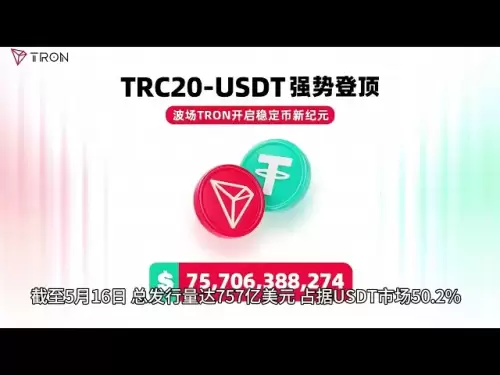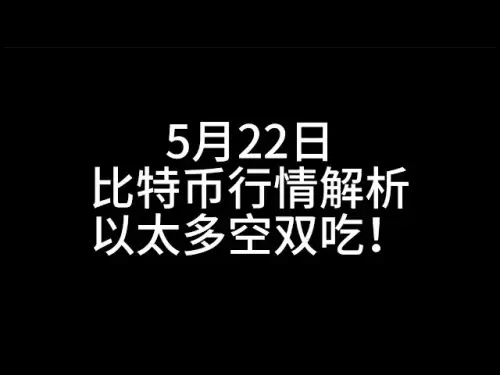-
 Bitcoin
Bitcoin $111,036.1680
4.19% -
 Ethereum
Ethereum $2,660.0169
4.81% -
 Tether USDt
Tether USDt $1.0000
-0.03% -
 XRP
XRP $2.4352
3.49% -
 BNB
BNB $687.4033
4.94% -
 Solana
Solana $178.5091
5.38% -
 USDC
USDC $0.9998
0.01% -
 Dogecoin
Dogecoin $0.2413
6.52% -
 Cardano
Cardano $0.8047
6.47% -
 TRON
TRON $0.2814
3.73% -
 Sui
Sui $4.0579
4.65% -
 Chainlink
Chainlink $16.6173
4.40% -
 Avalanche
Avalanche $25.2149
10.76% -
 Hyperliquid
Hyperliquid $31.0390
16.57% -
 Stellar
Stellar $0.3019
4.02% -
 Shiba Inu
Shiba Inu $0.0...01532
5.34% -
 Bitcoin Cash
Bitcoin Cash $434.8090
9.30% -
 Hedera
Hedera $0.2037
4.05% -
 UNUS SED LEO
UNUS SED LEO $8.8679
0.64% -
 Toncoin
Toncoin $3.1681
3.65% -
 Polkadot
Polkadot $4.8874
4.28% -
 Litecoin
Litecoin $98.6544
3.21% -
 Monero
Monero $403.4245
10.64% -
 Bitget Token
Bitget Token $5.2808
2.71% -
 Pepe
Pepe $0.0...01454
6.38% -
 Pi
Pi $0.8334
3.62% -
 Dai
Dai $0.9998
-0.02% -
 Ethena USDe
Ethena USDe $1.0002
-0.04% -
 Bittensor
Bittensor $468.9702
13.06% -
 Uniswap
Uniswap $6.4406
3.21%
How to read SAR and KDJ resonance signals?
Using SAR and KDJ resonance signals can boost your crypto trading by identifying strong buy and sell opportunities based on trend and momentum alignment.
May 22, 2025 at 10:56 am
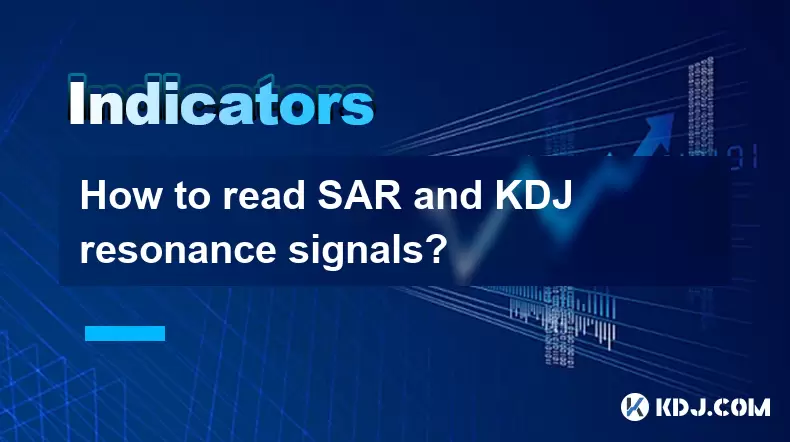
Understanding how to read SAR (Stop and Reverse) and KDJ (Stochastic Oscillator) resonance signals can significantly enhance your ability to make informed trading decisions in the cryptocurrency market. These technical indicators, when used in conjunction, can provide traders with valuable insights into potential trend reversals and momentum shifts. This article will delve into the mechanics of SAR and KDJ, explain how to interpret their signals, and guide you on identifying resonance signals for effective trading.
Understanding SAR (Stop and Reverse)
SAR, or Stop and Reverse, is a trend-following indicator developed by J. Welles Wilder. It is designed to provide entry and exit points in the market by placing dots above or below the price action. When the dots are below the price, it indicates a bullish trend, suggesting that traders should consider buying. Conversely, when the dots are above the price, it signals a bearish trend, indicating a potential sell opportunity.
- Bullish Signal: When the SAR dots flip from above the price to below it, this is a signal to buy.
- Bearish Signal: When the SAR dots flip from below the price to above it, this is a signal to sell.
The SAR indicator is particularly useful for identifying potential reversals in the market, but it can also generate false signals during periods of high volatility. Therefore, it is crucial to combine SAR with other indicators, such as the KDJ, to confirm trends and reduce the likelihood of false signals.
Understanding KDJ (Stochastic Oscillator)
The KDJ indicator is a momentum oscillator that measures the speed and change of price movements. It is derived from the stochastic oscillator but includes an additional line, the J line, which is more sensitive to market movements. The KDJ consists of three lines: the %K line, the %D line, and the J line. The %K line is the fastest, followed by the %D line, which is a moving average of %K. The J line is calculated as J = 3 x %K - 2 x %D.
- Overbought Condition: When the KDJ lines are above 80, it indicates that the market may be overbought, suggesting a potential sell opportunity.
- Oversold Condition: When the KDJ lines are below 20, it indicates that the market may be oversold, suggesting a potential buy opportunity.
The KDJ is particularly useful for identifying potential trend reversals and can help traders confirm signals generated by other indicators like the SAR.
Identifying SAR and KDJ Resonance Signals
Resonance signals occur when both the SAR and KDJ indicators provide the same trading signal, increasing the confidence in the trade. To identify these signals, traders need to monitor both indicators simultaneously and look for instances where they align.
- Bullish Resonance Signal: This occurs when the SAR dots flip to below the price, indicating a bullish trend, and the KDJ lines move from below 20 to above 20, signaling an oversold condition that is beginning to reverse. This alignment suggests a strong buy opportunity.
- Bearish Resonance Signal: This occurs when the SAR dots flip to above the price, indicating a bearish trend, and the KDJ lines move from above 80 to below 80, signaling an overbought condition that is beginning to reverse. This alignment suggests a strong sell opportunity.
Practical Application of SAR and KDJ Resonance Signals
To effectively apply SAR and KDJ resonance signals in your trading strategy, follow these steps:
- Set Up Your Chart: Ensure that both the SAR and KDJ indicators are added to your trading chart. Most trading platforms allow you to customize the settings of these indicators to suit your trading style.
- Monitor the Indicators: Keep an eye on the SAR dots and the KDJ lines. Look for instances where the SAR dots flip from above to below the price (bullish) or from below to above the price (bearish).
- Confirm with KDJ: Once you see a potential signal from the SAR, check the KDJ lines. For a bullish signal, ensure that the KDJ lines are moving from below 20 to above 20. For a bearish signal, ensure that the KDJ lines are moving from above 80 to below 80.
- Execute the Trade: If both indicators align, execute the trade based on the resonance signal. For a bullish signal, consider buying; for a bearish signal, consider selling.
Example of a Bullish Resonance Signal
Let's consider a practical example of a bullish resonance signal in the cryptocurrency market. Suppose you are monitoring the price of Bitcoin and notice the following:
- The SAR dots have flipped from above the price to below the price, indicating a potential bullish trend.
- Simultaneously, the KDJ lines have moved from below 20 to above 20, indicating that the market is transitioning from an oversold condition to a potential bullish reversal.
In this scenario, the alignment of both indicators suggests a strong buy opportunity. You would then execute a buy order, anticipating that the price of Bitcoin will continue to rise.
Example of a Bearish Resonance Signal
Now, let's consider an example of a bearish resonance signal. Suppose you are monitoring the price of Ethereum and notice the following:
- The SAR dots have flipped from below the price to above the price, indicating a potential bearish trend.
- Simultaneously, the KDJ lines have moved from above 80 to below 80, indicating that the market is transitioning from an overbought condition to a potential bearish reversal.
In this scenario, the alignment of both indicators suggests a strong sell opportunity. You would then execute a sell order, anticipating that the price of Ethereum will continue to fall.
Using SAR and KDJ Resonance Signals in Different Timeframes
The effectiveness of SAR and KDJ resonance signals can vary depending on the timeframe you are trading. Here are some considerations for different timeframes:
- Short-Term Trading: In shorter timeframes, such as 15-minute or 1-hour charts, SAR and KDJ resonance signals can help you capitalize on quick price movements. However, be aware that these signals may be more susceptible to false positives due to increased volatility.
- Long-Term Trading: In longer timeframes, such as daily or weekly charts, SAR and KDJ resonance signals can provide more reliable indications of trend reversals. These signals are less prone to false positives but may require more patience as trades develop over a longer period.
Combining SAR and KDJ with Other Indicators
While SAR and KDJ resonance signals can be powerful on their own, combining them with other technical indicators can further enhance your trading strategy. Some popular indicators to consider include:
- Moving Averages: Use moving averages to confirm the direction of the trend. If the SAR and KDJ indicate a bullish trend, ensure that the price is above the moving average for added confirmation.
- Relative Strength Index (RSI): The RSI can help confirm overbought or oversold conditions indicated by the KDJ. If the KDJ suggests an overbought market, a high RSI reading can provide additional confirmation.
- MACD (Moving Average Convergence Divergence): The MACD can help identify potential trend reversals and momentum shifts, complementing the signals provided by the SAR and KDJ.
Frequently Asked Questions
Q: Can SAR and KDJ resonance signals be used for all cryptocurrencies?
A: Yes, SAR and KDJ resonance signals can be applied to any cryptocurrency as long as the data is available. However, the effectiveness of these signals may vary depending on the liquidity and volatility of the specific cryptocurrency.
Q: How often should I check for SAR and KDJ resonance signals?
A: The frequency of checking for SAR and KDJ resonance signals depends on your trading style. For short-term traders, checking the signals every few minutes or hours may be necessary. For long-term traders, daily or weekly checks may suffice.
Q: Are SAR and KDJ resonance signals suitable for beginners?
A: While SAR and KDJ resonance signals can be powerful tools, they may be challenging for beginners to interpret accurately. It is recommended that beginners start with simpler indicators and gradually incorporate more complex tools like SAR and KDJ as they gain experience.
Q: Can SAR and KDJ resonance signals be used in conjunction with fundamental analysis?
A: Yes, combining technical indicators like SAR and KDJ with fundamental analysis can provide a more comprehensive view of the market. While technical analysis focuses on price movements, fundamental analysis considers factors such as project developments, market sentiment, and economic indicators.
Disclaimer:info@kdj.com
The information provided is not trading advice. kdj.com does not assume any responsibility for any investments made based on the information provided in this article. Cryptocurrencies are highly volatile and it is highly recommended that you invest with caution after thorough research!
If you believe that the content used on this website infringes your copyright, please contact us immediately (info@kdj.com) and we will delete it promptly.
- Bitcoin Surges Past $100K as Institutional Buying, Trade Deals, and U.S. Policy Clarity Fuel Bullish Sentiment
- 2025-05-22 19:30:13
- Volatility Shares Launches XRP Futures ETF on Nasdaq, the First Such Product
- 2025-05-22 19:30:13
- Nexchain Pauses Two High-Profile Altcoin ETF Proposals, Postponing Judgments on Spot XRP and Dogecoin Funds
- 2025-05-22 19:25:13
- FIFA to Power Its Own Dedicated Layer-1 Blockchain Using Avalanche's Network
- 2025-05-22 19:25:13
- Pi Network (PI) Shows Signs of Recovery After May Plunge
- 2025-05-22 19:20:13
- Shibarium Network New Account Creation Falls Below 100
- 2025-05-22 19:20:13
Related knowledge
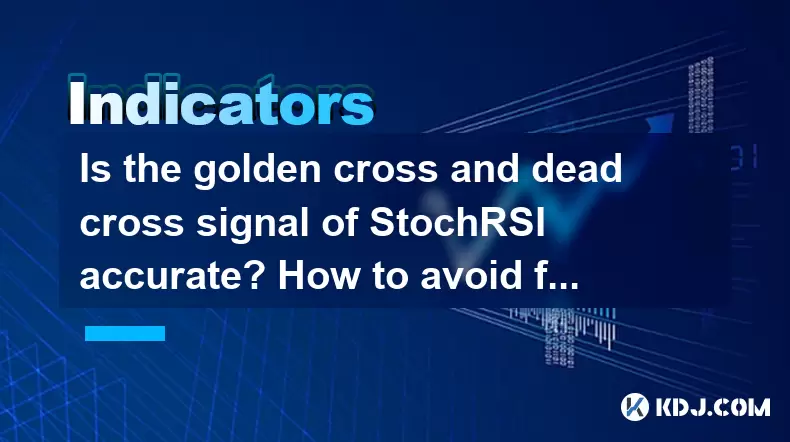
Is the golden cross and dead cross signal of StochRSI accurate? How to avoid false signal interference?
May 22,2025 at 06:49pm
The golden cross and dead cross signals generated by the Stochastic RSI (StochRSI) are popular tools used by traders within the cryptocurrency market to identify potential buy and sell opportunities. The StochRSI is a momentum oscillator that ranges between 0 and 1, and it's derived from the Relative Strength Index (RSI). Understanding the accuracy of t...
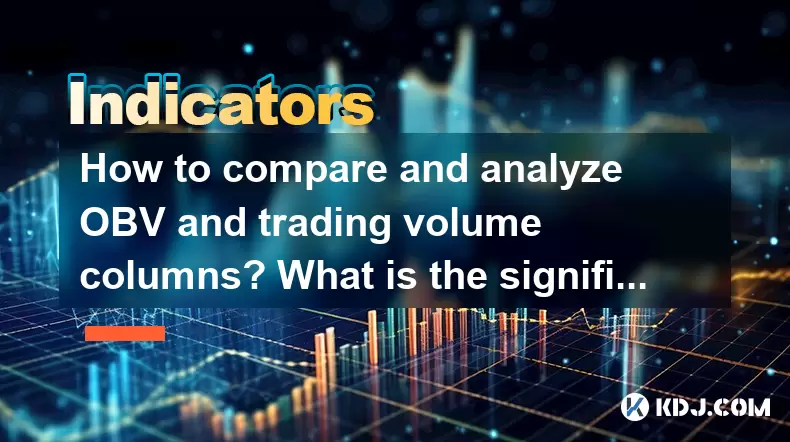
How to compare and analyze OBV and trading volume columns? What is the significance of the changes in red and green columns?
May 22,2025 at 07:35pm
In the cryptocurrency trading world, understanding and analyzing the On-Balance Volume (OBV) and trading volume columns is crucial for making informed decisions. Both indicators provide valuable insights into market trends and potential price movements. In this article, we will delve into how to compare and analyze OBV and trading volume columns, and di...
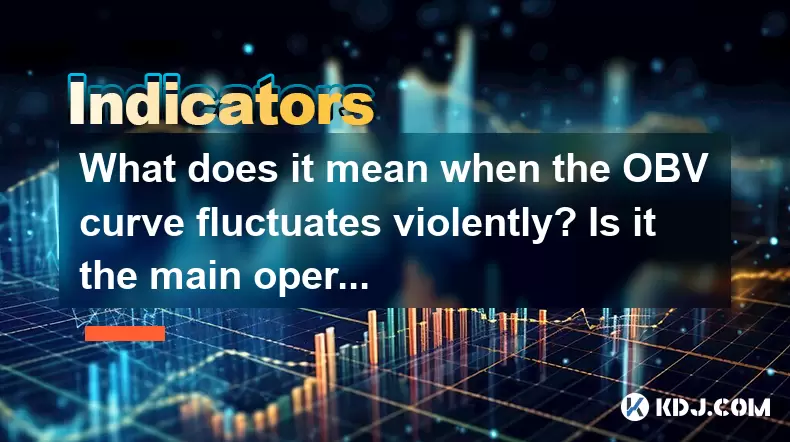
What does it mean when the OBV curve fluctuates violently? Is it the main operator or noise interference?
May 22,2025 at 03:57pm
The On-Balance Volume (OBV) indicator is a popular technical analysis tool used by traders and investors within the cryptocurrency market to predict price movements based on volume changes. When the OBV curve fluctuates violently, it raises questions about the underlying causes and the implications for trading strategies. In this article, we will explor...
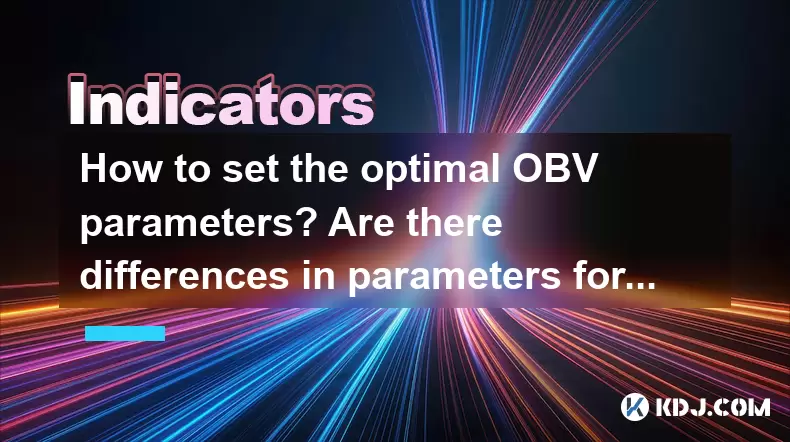
How to set the optimal OBV parameters? Are there differences in parameters for different cycles?
May 22,2025 at 04:21pm
The On-Balance Volume (OBV) indicator is a popular technical analysis tool used by cryptocurrency traders to predict price movements based on volume flow. Setting the optimal OBV parameters is crucial for maximizing the effectiveness of this indicator. This article will delve into how to set these parameters and whether they should be adjusted for diffe...
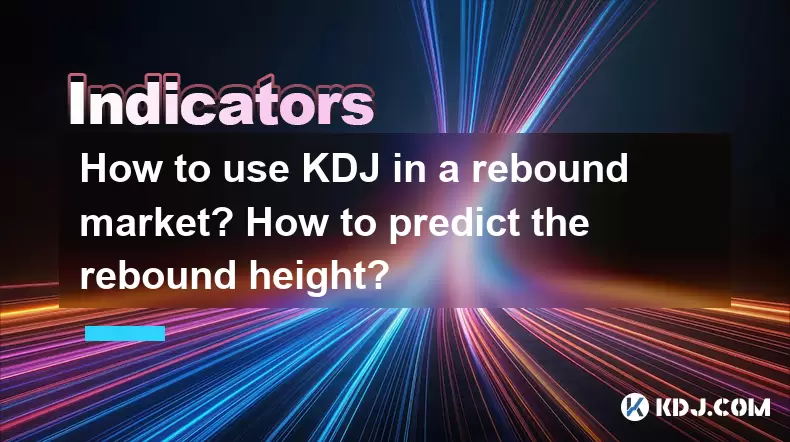
How to use KDJ in a rebound market? How to predict the rebound height?
May 22,2025 at 07:14pm
How to Use KDJ in a Rebound Market? How to Predict the Rebound Height? The KDJ indicator, also known as the Stochastic Oscillator, is a popular technical analysis tool used by traders to identify potential reversals in the market. In a rebound market, understanding how to effectively use the KDJ indicator can be crucial for making informed trading decis...
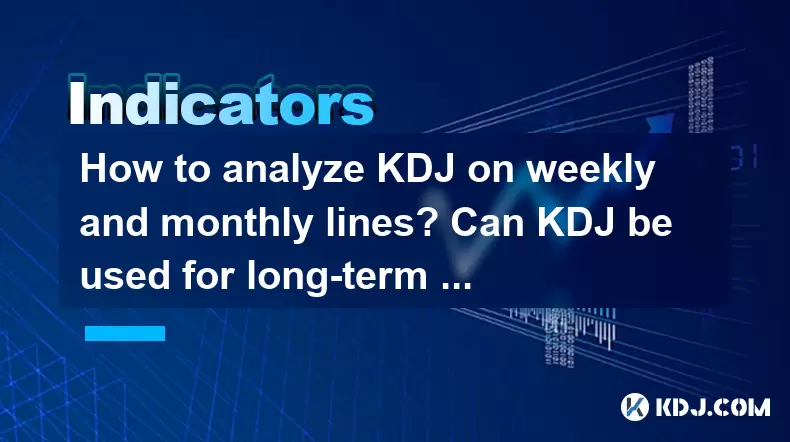
How to analyze KDJ on weekly and monthly lines? Can KDJ be used for long-term operations?
May 22,2025 at 02:21pm
Analyzing the KDJ indicator on weekly and monthly lines is a valuable skill for traders interested in long-term cryptocurrency operations. The KDJ, also known as the Stochastic Oscillator, is a momentum indicator that compares a closing price of a cryptocurrency to its price range over a certain period. By applying the KDJ to weekly and monthly timefram...

Is the golden cross and dead cross signal of StochRSI accurate? How to avoid false signal interference?
May 22,2025 at 06:49pm
The golden cross and dead cross signals generated by the Stochastic RSI (StochRSI) are popular tools used by traders within the cryptocurrency market to identify potential buy and sell opportunities. The StochRSI is a momentum oscillator that ranges between 0 and 1, and it's derived from the Relative Strength Index (RSI). Understanding the accuracy of t...

How to compare and analyze OBV and trading volume columns? What is the significance of the changes in red and green columns?
May 22,2025 at 07:35pm
In the cryptocurrency trading world, understanding and analyzing the On-Balance Volume (OBV) and trading volume columns is crucial for making informed decisions. Both indicators provide valuable insights into market trends and potential price movements. In this article, we will delve into how to compare and analyze OBV and trading volume columns, and di...

What does it mean when the OBV curve fluctuates violently? Is it the main operator or noise interference?
May 22,2025 at 03:57pm
The On-Balance Volume (OBV) indicator is a popular technical analysis tool used by traders and investors within the cryptocurrency market to predict price movements based on volume changes. When the OBV curve fluctuates violently, it raises questions about the underlying causes and the implications for trading strategies. In this article, we will explor...

How to set the optimal OBV parameters? Are there differences in parameters for different cycles?
May 22,2025 at 04:21pm
The On-Balance Volume (OBV) indicator is a popular technical analysis tool used by cryptocurrency traders to predict price movements based on volume flow. Setting the optimal OBV parameters is crucial for maximizing the effectiveness of this indicator. This article will delve into how to set these parameters and whether they should be adjusted for diffe...

How to use KDJ in a rebound market? How to predict the rebound height?
May 22,2025 at 07:14pm
How to Use KDJ in a Rebound Market? How to Predict the Rebound Height? The KDJ indicator, also known as the Stochastic Oscillator, is a popular technical analysis tool used by traders to identify potential reversals in the market. In a rebound market, understanding how to effectively use the KDJ indicator can be crucial for making informed trading decis...

How to analyze KDJ on weekly and monthly lines? Can KDJ be used for long-term operations?
May 22,2025 at 02:21pm
Analyzing the KDJ indicator on weekly and monthly lines is a valuable skill for traders interested in long-term cryptocurrency operations. The KDJ, also known as the Stochastic Oscillator, is a momentum indicator that compares a closing price of a cryptocurrency to its price range over a certain period. By applying the KDJ to weekly and monthly timefram...
See all articles
























